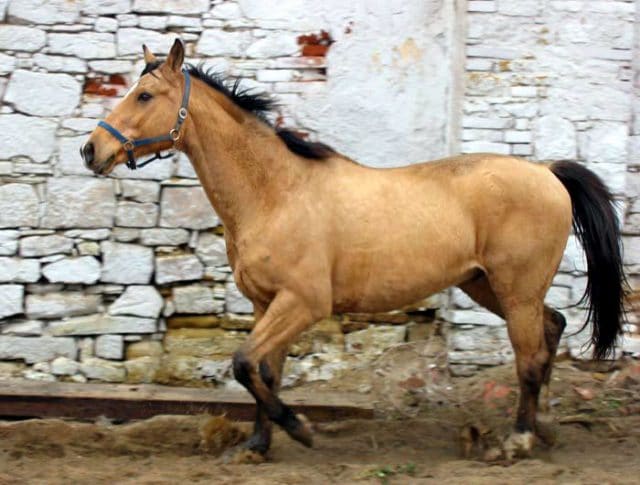Type the name of the breed you're looking for below
[wpdreams_ajaxsearchlite] Don't see the breed your're looking for? Click here and let us know!
Kinsky horse
| Country Of Origin | Czechoslovakia |
| History and Background | The development of the Kinsky horse is closely linked with the history of the Chlumec branch of the Kinsky family and in particular Count Oktavian Kinsky (1813–1896). The family of the Count had for decades bred Thoroughbreds for horse racing or steeplechasing. The first known mention of the breed term "Kinsky horse" or the now-protected designation "Equus Kinsky" is from the year 1838, with the creation of modern sport horse stud book. Prior to 1838, the horses were known only as the particular horses bred by the various Counts Kinsky of the branch living in Chlumec nad Cidlinou. The Kinsky family leaders were raised to the rank of Count in 1628. Thereafter, the Kinsky family received an order to develop their stud farm and breed horses for the Emperor's cavalry in the early 18th century. Horses with the best stamina, boldness and amenable personality suitable for battle and loyal to their riders were preferred, along with the golden color. In 1776, the quality of the horse was further improved through bloodstock from England. In 1814 Countess Kinsky arrived in Vienna for the International Congress riding a golden Kinsky horse; this attracted huge attention and the golden horse became sought after throughout Europe. Under the direction of Count Oktavian Kinsky, the stud near the Chlumec castle was expanded further and the studbook, which is still in use, was developed. Count Octavian was eccentric but a keen horseman. In 1874 he introduced an exhausting steeplechase, the Paradubice, where his own horses competed, frequently placed - and sometimes won. Count Karel Kinsky rode the Kinsky mare Zoedone to win the Grand National at Aintree England in 1883. The next year at the same race, his horse collapsed. The horse was not raced again and was retired to the Kinsky stud. Following the communist takeover and the election of Klement Gottwald in 1948, many of the Bohemian nobility fled, including the Kinsky family, who left Chlumec, with a consequent dispersal of the Kinsky herd. However, Count Radslav Kinsky remained in Chlumec until 1953 and when he returned in 1989 to reclaim his property, he helped found a club called "Equus Kinsky" to protect the remaining herd of Kinsky horses and eventually resurrect the breed. The fall of the Berlin Wall in 1989 and expanded contact with the west brought the breed greater recognition. Authorities in the Czech Republic now consider this breed an emblem of the country and the horses are now legally protected. Present and future; By the end of the 20th century, the Kinsky horse breed had been partly assimilated into the Czech warm blood. The Kinsky horse is no longer threatened today (2006), but with less than 1,000 Kinsky horses surviving worldwide it is one of the rarest horse breeds in the world. The Czech Republic has recognized that the breed is worth saving as cultural property. Various breeders of Kinsky horses are expanding their breeding programs in central Europe and there are also breeders and enthusiasts of the Kinsky horse in England, America and elsewhere. The future looks safer for this breed, and some promoters have the goal of seeing a Kinsky horse once again running at The European Grand National - Pardubice to celebrate more than 160 years of the Kinsky sport horse and countless more of the Kinsky horse in general. |
| Use Today | Pleasure horses, Sport horses, Eventing horses |
| Height | 15.2 to 17 hands (62 to 68 inches, 157 to 173 cm) |
| Colour | Bay, Black, Chestnut, Gold, Creme |
| Characteristics | They are considered to have stamina, athleticism and good character. Around 40% of Kinsky horses have coats in various shades of gold, due to the cream dilution gene, while others are bay, chestnut, or black (although black is very rare). The Kinsky horse is known for its extremely glossy, almost metallic, coat. |
| Personality and Temperament | Much importance is attached to the balanced, good-natured character of these horses. From birth, Kinsky horses are all very much inclined towards humans, friendly and curious. |
| Other Considerations | The Kinsky horse is a versatile, multipurpose horse, suited to dressage, military and police applications, eventing, steeplechasing, fox hunting, show jumping and polo. |



